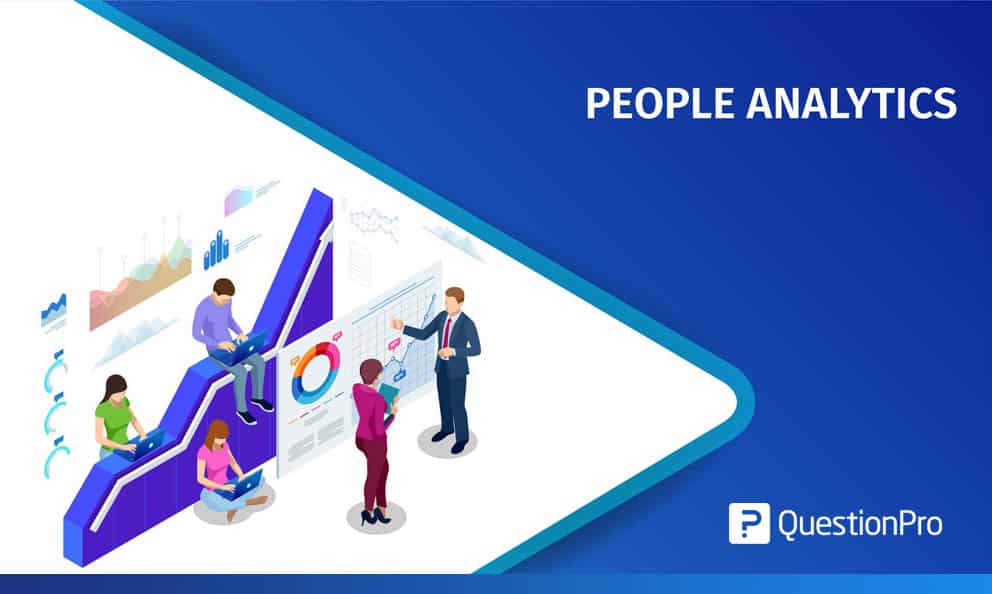 Reading Time: 3 minutes read
Reading Time: 3 minutes readI call Josh Bersin the Founding Father of modern-day people-analytics (I’m not the only one). He understood the gold mine sitting at the intersection of human-beings and data before most of us did. And he’s worked with organizations across the globe to mine that gold. In 2017, he (and Deloitte) published what I still see as a seminal wake-up call for organizations to pay more intention to workforce analytics: “High-Impact People Analytics.”
People Analytics (aka Workforce Analytics, HR Analytics, etc.) is a big term; it means lots of different things to lots of different people. This is probably the most important thing for us to agree on. There is no shortage – absolutely no shortage – of data out there today; it’s cheap, easy…it’s everywhere. Good data, though, is as elusive as it’s always been. In fact, I would argue it’s even more elusive.
There are, for instance, more smoke-screens to contend with. Your system (whatever it is) can produce a beautifully colorful dashboard of charts, graphs, gauges, and meters. And you can all oooh and ahh about them. But most of what’s behind that dashboard is crap; it neither informs nor sparks real and permanent change in your workplace. You don’t do much with it, others don’t do anything with it.
There are 7 things Bersin gave us a heads-up on. These are things that delineate meaningful, actionable people analytics from the crap. These are the things that separate the rookies from the pros, the immature from the mature. So it’s a great place for us all to start…
1. Workforce data accuracy is job #1
If you’re going to do anything with the data, make sure it’s accurate and complete. If you’re using a survey, make sure the model behind it is statistically tested, valid, reliable. I’m willing to bet, by the way, that if you made your survey up (or borrowed it from someone else) it has some flaws in it.
2. Create a diverse portfolio of workforce data sources
If you rely on one annual survey (e.g. employee engagement), you’re missing the point. You need to gather data throughout the year at different times, in different ways, and from different people. Focus on the continuum – the full-life-cycle of employee experience. Consider using “Pulse Surveys” and “Spot Surveys.” Mix it up, randomize it – you don’t have to hit everyone all the time. You can get statistical significance using sampling techniques.
3. Workforce data literacy is critical
If you’re going to gather data, you better understand it. That means not always taking it at face-value. You have to have the acumen (and interest) to dig deeper. Most data doesn’t just smack you in the face with the answer. Sadly, accordingly to Bersin, the least mature organizations report that as few as 20% of their HR team members have a “Good” or “Very Good” proficiency in basic data literacy.
4. Need for a strong People Analytics team
The most mature organizations have entire teams – if not departments – dedicated to people analytics. That’s how important that competency is for them. And it helps them solve for #3. Not everyone can be literate in people analytics. That’s OK. Find the people who are, can be, and want to be.
5. Focus on actionable and scalable information
If you’re going to measure – particularly through surveys – you better demonstrate that you’re willing and able to act on it. Too often data goes on the shelf without action. This is demoralizing. We must get better at prioritizing. We cannot be all things to all people. If your data doesn’t help you prioritize on the things that are not only high-impact but pragmatic, it’s not doing what it should for you.
6. Focus on strategic alignment
Data for the sake of data is a waste. If it’s not helping you drive business decisions, to empower your business leaders, and to strengthen workforce alignment, it’s not worth the effort. Data in and of itself cannot solve our complex business problems, but it can certainly help us solve them. This is all about moving from analyzing and reporting on “what is” to analyzing and reporting on “what we’re going to do about it.”
7. Build a data-driven culture
If you declare people analytics an important thing in your business, then you should strive to ensure everything about your culture – everything you say and do, the way you act, and what your employees experience – reinforces and clarifies that. Be intentional about that.
None of this stuff is all that difficult. We think it’s a fantastic foundation for maturing your own people analytics practices. Give it a whirl…
And if you’d like to talk with one of our Workforce Analytics experts about how we help organizations turn their employee experience data into operational excellence, we’d love to connect.
Watch this space for some interesting statistics!
Learn more: Employee Survey Software and Tool





















